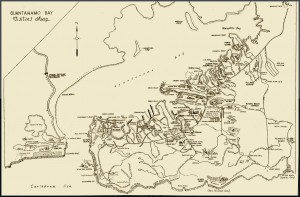New GPMP Blog Series: Guantanamology
Particularly given its geographic remoteness and public inaccessibility, Guantánamo is both difficult to comprehend and easy to forget about. Before joining the Guantánamo Public Memory Project, I understood GTMO as a product of the ‘War on Terror’ and knew very little about its prior uses. Over the course of the past year and a half, as a student and as a researcher with the Project, I have had the opportunity to immerse myself in the lesser-known histories of GTMO and the issues they raise.
But I am also consistently reminded how much there remains to learn about this complex place. On a regular basis, my colleagues and I receive inquiries from individuals and relatives of those who have lived, worked, or been held at the base, offering to share their stories—and the pieces of the base they have kept with them. Each time people have generously removed these invaluable possessions from photo albums, storage boxes, and bookshelves to share with us, I have glimpsed yet another side of the truly enigmatic Guantánamo.
In the 98 year-old photographs of young American sailors enjoying ice cream, the cookbooks compiled by wives of military personnel during the Cold War, and the newspapers and political cartoons handcrafted by Cuban refugees while detained, one can gain fascinating insight into the vast range of lived experiences at GTMO. These objects take us away from broad and impersonal themes that often dominate discussion by revealing stories of real people who have endured unimaginable hardship and loss, resisted indefinite confinement, fallen in love, and found comfort in community, all in the same legally ambiguous territory.
Now, the Digital Library of the Caribbean (dLOC) and Columbia University’s Rare Book and Manuscript Library through its Center for Human Rights Documentation have opened the Guantánamo Public Memory Project archive, to preserve this unique material for posterity. Both the digital and physical archives will be fully open to the public, and we will keep you informed on their progress!
If you have material from GTMO that you would like preserved in digital or physical form, please contact guantanamo@columbia.edu for more information.
This post begins a new series in which I will highlight these never-before-seen items and the stories that come with them. Uncovering the incredible diversity of memories captured in these materials can help us challenge our own preconceptions about GTMO’s past, and help inform our critical engagements with its future.
I invite you to join me in this exciting exploration: stay tuned for Guantanamology!

